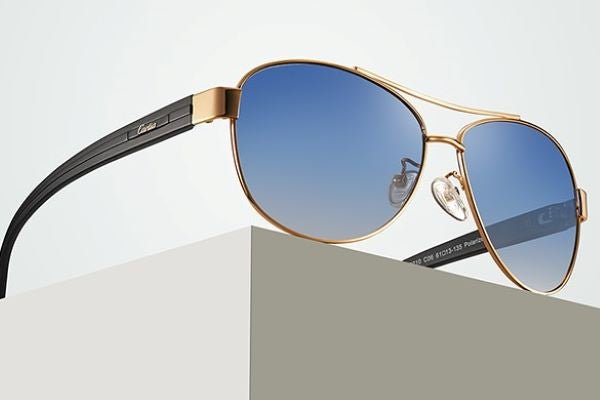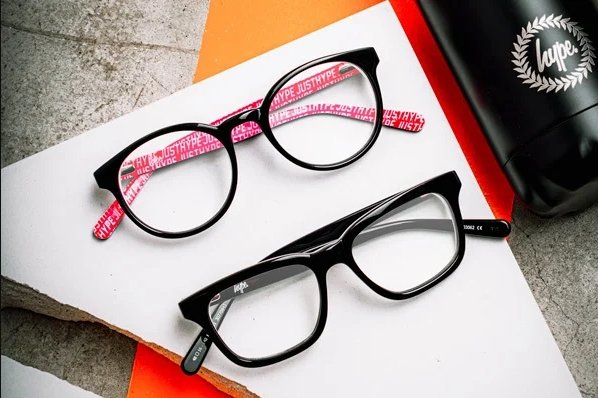How to Choose Reading Glasses?
Choose big frames the first time. When choosing reading glasses, you can choose the big frames for the first time. You may need larger glasses frames or lenses to really get the sweet spot of where the prescription is.
And if you have never worn glasses for eye conditions such as nearsightedness, farsightedness or astigmatism, it is likely you will be able to see well with non-prescription reading glasses. So, you can buy these non-prescription reading glasses.
Full-frame glasses
Full-rimed Glasses are now commonly used, which can make the lens fixed, with good protection of glasses. They are firm and easy to finalize the design, with strong hardness. Full-rim glasses frame is in the majority with plank material. The style is sporty and stylish, which is pursued by young people nowadays. Full-frame glasses are of different styles, rich colors, and can mask part of the lens thickness. The beautiful extent is very good, so are loved by many people with slightly higher degrees.
Does it take time to adjust to progressive lenses?
How long should it take to get used to progressive lenses? I have never worn glasses before.Progressive lenses were developed to allow easy switching between near and far views. Progressive glasses are divided into four parts. The upper part is the far-light region. The lower part is the near-light region, and the middle part is a variable light region. From top to bottom, if the hyperopia film is gradually increased and the myopia film is gradually decreased. The middle variable area is on both sides of the astigmatism area. Because of the prism effect, when you see things, through this area, the object will be blurred, and the eyes will feel uncomfortable. If the height of the frame itself is very small, the transition zone of progressive multi-focus is very narrow, and the eyes may not adapt to the sunglasses. The current design of progressive lenses is still not mature. Imported brands are relatively stable but expensive, and domestic brands are not mature in design. For various reasons, progressive glasses may be difficult to adapt to wearing.
The discoloration principle of photochromic lenses
The fine grains of silver halide and copper oxide were melted into the glass melt of the lens blank material to produce the lens. When the lens is in the ultraviolet environment, the silver halide molecules will undergo a chemical reaction due to the ultraviolet radiation and decompose into silver ion particles and halogens. Because the silver particles are dark and absorb visible light, the lens gets darker. When the ultraviolet light is weakened or isolated, silver ions and halogens are recombined under the action of catalyst copper oxide to form silver halide, so the color of the lens gradually becomes lighter and transparent again. The discoloration mechanism of the resin lens is similar to that of the glass lens.
Refractive index of spectacle lens
It is generally believed that the higher the refractive index, the better the spectacle lens. Such spectacle lenses are relatively thin, and of course, the price is a bit expensive. When the refractive index increases, the direction of the light entering the lens will change greatly, the focus will move to the lens, the focal length will be smaller, and the diopter will become larger. In order to keep the diopter unchanged, it is necessary to reduce the curvature of the lens, that is, to reduce the curvature of the mirror surface, so that the thickness of the lens can be reduced. This is why the larger the refractive index, the thinner the lens is. Under the same premise of other things, the larger the refractive index, the thinner the lens, the lighter and more beautiful the lens, and the higher the price, but the larger the refractive index is not the better.
The shape of the lens is also important.
Aviator and cat-eye glasses should be avoided, as both will cut off the base of the prescription, resulting in poor reading vision. Instead, they should opt for shorter frames with rounded edges, such as bull horn frames, vintage wingtips, round frames, and oval frames.
Different Types of Progressive Lenses
The ground-view progressive lenses are designed for people who enjoy the outdoors. These lenses are supposed to provide a natural feel to your vision and reduce lens distortion. Ground-view progressive lenses allow better vision through the sides and bottom of the lens, so they give you improved vision when driving, using computers and looking downwards.
The standard progressive lenses are exactly what they sound like. They offer a wide reading area and have a longer drop between prescriptions and require a larger frame. However, they are less specialized than other lenses.











































